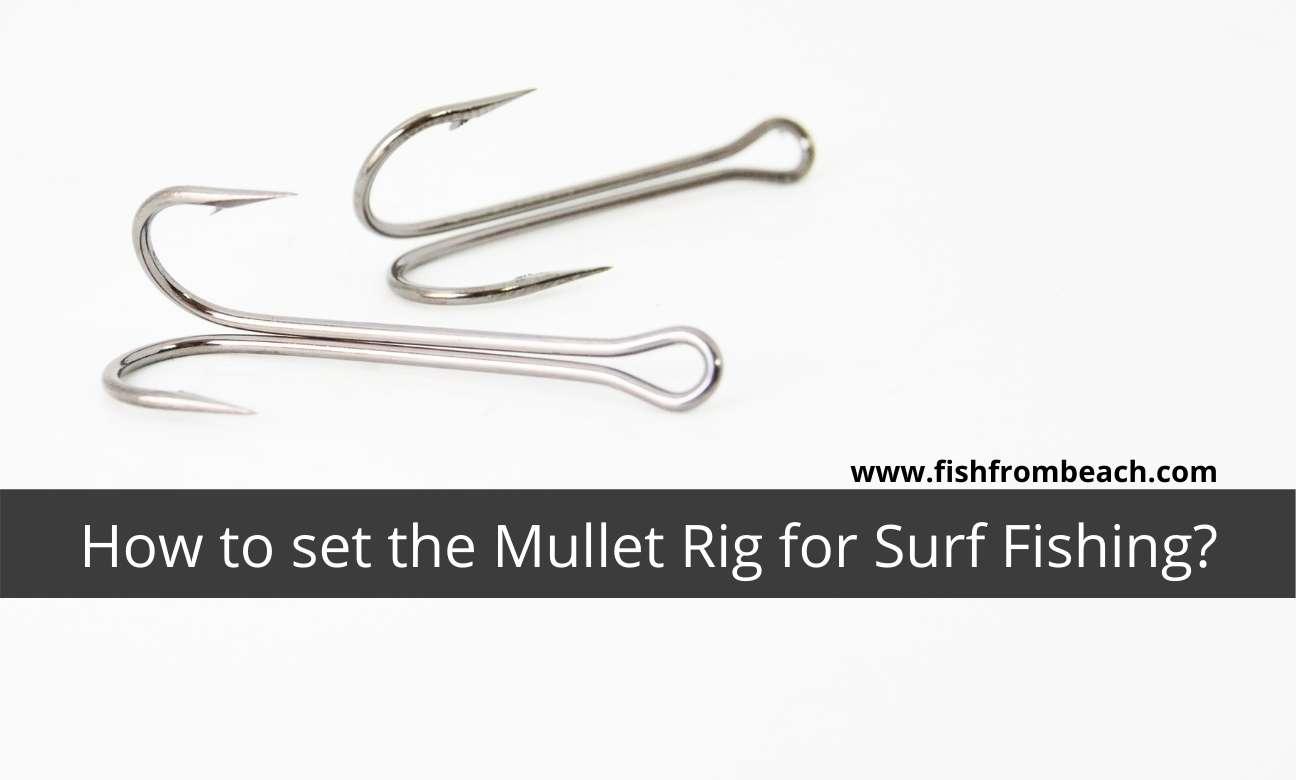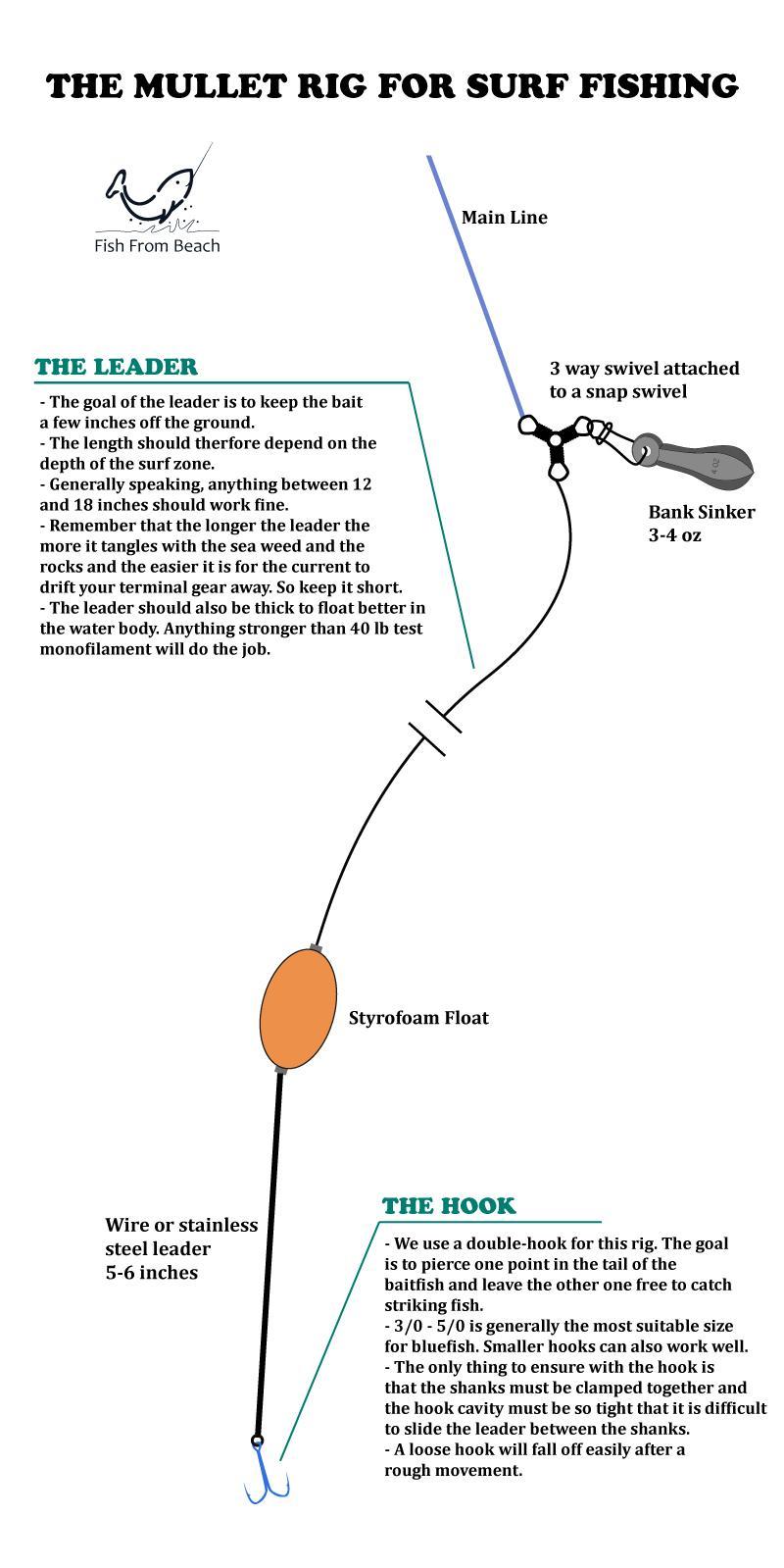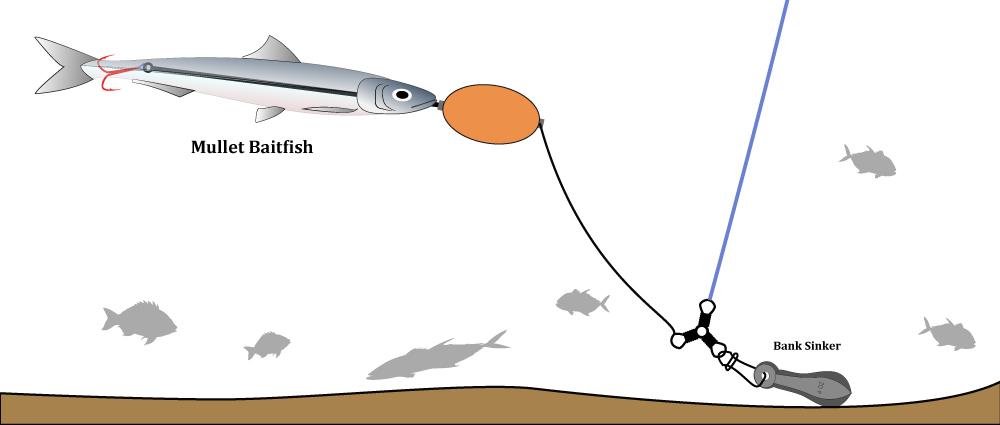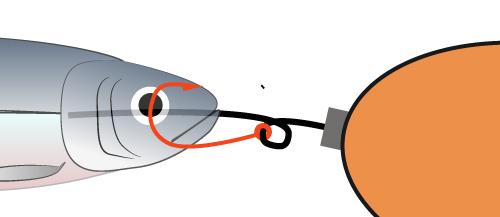
When it comes to surf fishing rigs, there are setups that are suitable for many conditions and purposes and others that only work when targeting a specific type of fish.
One of these setups is the whole mullet rig which is known to be very effective with bluefish and the other predatory fish that attack prey from the tail.
Surf anglers aiming for this kind of species should therefore have or be able to set up the mullet rig because it will not only improve their catch count and hookup ratio, but also help them keep unwanted fish away and prevent them from stealing their offering.
That’s what this article is all about.
Today, we will discuss how to set up the mullet rig for surf fishing? when to use the mullet rig off the beach? What are the advantages and disadvantages of this setup? And how to use it effectively from shore?
What makes the mullet rig good for surf fishing?
As we said, the mullet rig is a species-oriented setup that is designed based on the feeding behavior of bluefish and the way they approach prey.
Let me elaborate.
Bluefish are known to strike baitfish from the tail section. Their typical feeding behavior is to pursue fast-swimming prey and catching the slowest/weakest ones from behind.
That’s where the mullet rig comes into play. This line configuration requires putting the hook in the tail of baitfish (typically finger mullet) so that when the blues strike, you have a better chance of grabbing their jaws.
Now, while it’s true that the mullet rig is more geared towards bluefish, it has also proved to be effective with many other species we catch from the surf.
Fish such as striped bass, redfish, albacore tuna, sharks all exhibit predatory feeding behavior, which suggests that they generally don’t care whether to hit baitfish from the tail or the head. It is therefore possible to catch all these species using the mullet rig.
In fact, the mullet rig is a great setup when you are interested in big catches only. Using a whole mullet (or any other baitfish) is generally more tempting for the large predators and a little intimidating for pan-sized fish. So it is very likely that you will experience heavier bites with this rig.
Another advantage of the mullet rig is that it features a styrofoam float before the hook which helps keep the bait suspended in the water body and thus away from crabs and the other unwanted species that steal baits at the bottom.
The limits of the mullet rig for surf fishing
With all the benefits of the mullet rig in head, it’s worth noting that it also has some limitations and drawbacks that can make it a poor choice for surf fishing.
The first thing to mention here is that presenting a whole fish as bait can drastically reduce your catch count.
I mean, let’s face it. Most fish we catch off the beach weigh less than 10 pounds and thus are not likely to strike a whole mullet.
So using this rig can really reduce your rewards unless there is an abundance of larger predators where you fish.
Personally, I only use this rig when I have more than 2 rods in use and I know there are big fish lurking around.
I set up a fish finder or high/low rig in two poles and the mullet rig in the third. This way, I guarantee I am making a good offer for every size division in the surf.
Another disadvantage of the mullet rig is that it makes it hard to reach a good casting distance.
The whole mullet receives a good amount of air/wind resistance during the load and as a result, drops sooner in the water.
Also, the way this setup is made somehow makes it flap and spin in the air, which contributes to the shorter casting range.
The last pitfall of the mullet rig is that the styrofoam float lifts the bait off the ground and as a result makes it out the reach of bottom feeders.
Yes, this helps to prevent crabs from stealing the bait, but it also prevents bites from species such as pompano, flounder, and puppy drums who prefer to pick their food from the seabed.
Which bait to use with this rig?
Well, as the name suggests, the most used bait for this rig is mullet.
Finger mullet is generally the best way to go because it’s small enough to fit the length of the wire leader we use in the rig. However, immature grey or cob mullet can work well too.
With that said, other baitfish can also be good for the mullet rig.
Personally, I have tried sardine (pilchard), herring, whiting, and peanut bunkers, and they all delivered well. Perhaps the only difference between them is that they attract different fish.
Herring for example is more tempting for striped bass. Mullet seems to be the favorite meal for bluefish. And sardine is sharks’ candy.
I have read on an online forum that even freshwater bluegill and sunnies work well when using the mullet rig for surf fishing.
So I believe the bait should not be a source of concern.
Just make sure it fits securely on the rig and looks good and appetizing to the fish.
Generally speaking, live bait always outperforms dead or chunked bait. So it’s good to have a cast net with you in order to catch a few mullets before you start fishing.
If you can’t do that, then at least make sure the baitfish you use is still fresh and tenacious.
For the size, anything between 5 to 8 inches should work fine. It shouldn’t exceed your hand (palm + fingers) size.
Cutting a long sardine or mullet in half to fit the rig can also do the trick and attract fish.
How to set up the mullet rig for surf fishing?

First of all, make sure your local tackle provider doesn’t sell ready-to-use mullet rigs. There is no need to set up everything from scratch if you can buy the whole thing and just attach it to your line.
Even if there is no one selling the rig where you live, try to buy it online.
Now let’s get into the setup details.
In simple words, the rig incorporates a styrofoam float with two loops on each side. The first loop is connected to a 12-18 inches monofilament leader, and the second holds a 5-6 inches wire or stainless steel leader.
Some use high-pound-test (say 100-120 lb) monofilament instead, but I prefer the wire because it resists better to the sharp teeth of bluefish.
Once you connect these three elements, insert the other end of the wire leader in the mouth of a finger mullet (or another baitfish of your choice) then keep pushing until you poke out the vent of the fish.
Now thread the end loop of the leader into one point of a 2/0 double-hook and slide it up the shank.
The hook should now be stable on the leader and show no risk of flying off after a rough movement.
One thing that helps with this is to only buy double hooks that don’t have space between the shanks. In other words, you want the two shanks to be snuggled together so much that you have a little trouble sliding the leader loop between them.
After you connect the hook, push the fish a bit towards the hook and then pierce one point into the tail and leave the other free.
Now let’s get back to the other side of the rig and connect the tag end of the monofilament leader to a three-way swivel.
The second loop of the swivel should hold a snap swivel that connects the sinker, and the third loop is the one that attaches the whole rig to your main line.
One thing about the monofilament leader here is that it shouldn’t be long.
12 inches is an overall good length and maybe 18 inches if the surf is deep and calm.
Longer leaders tend to tangle more often and struggle to withstand the current.
For the size, I prefer thick leaders for one simple reason: The thicker the line, the more it floats in the water, and therefore, the more it helps to suspend the bait.
Thin lines cut better in the water and, as a result, will pull your bait downward.
Personally, I use 80-lb test mono for the leader, but you can do well with 40-50 lb too.

A modification
There is a common problem that anglers face when using the mullet rig for surf fishing, and that is that the baitfish either crumbles on the leader or keeps sliding downwards until it reaches the hook or fall.
Fortunately, there is a quick and easy fix for that.
The solution is simply using a strong plier to make a small (3-4 millimeters) loop at the head of the wire leader (just under the float) and then thread a 2/0 circle hook into that loop.
Now after you pierce the tail with the double-hook, use the upper hook to pierce the eyes of the baitfish.

This simple trick will make your bait last much longer on the rig, and you will rarely find an empty hook after you collect the line.
Moreover, an additional hook always means more chances of capturing something.
It will also help to target those species who don’t hit from the tail 😉
Note (*): If you make a purchase through links from this website, we may get a small share of the sale from Amazon or other similar affiliate programs.
Surf Fishing Survey
Help us provide you with better content by answering simple questions about your surf fishing experience and knowledge.
We will put the collected responses together and turn them into valuable information that will help you catch more fish from shore 😉
Note: No personal information will be collected with your answer.

